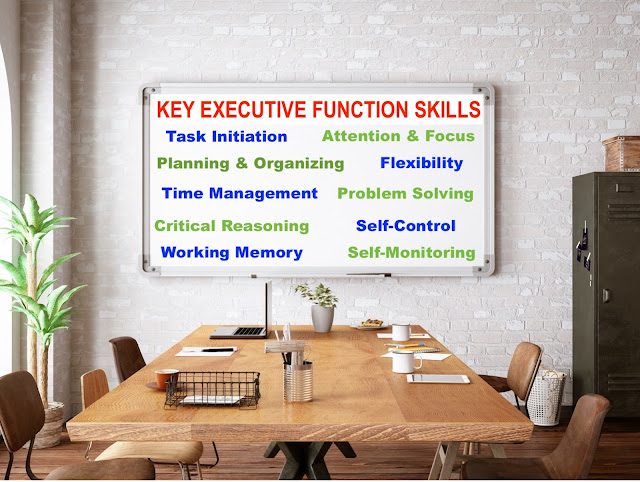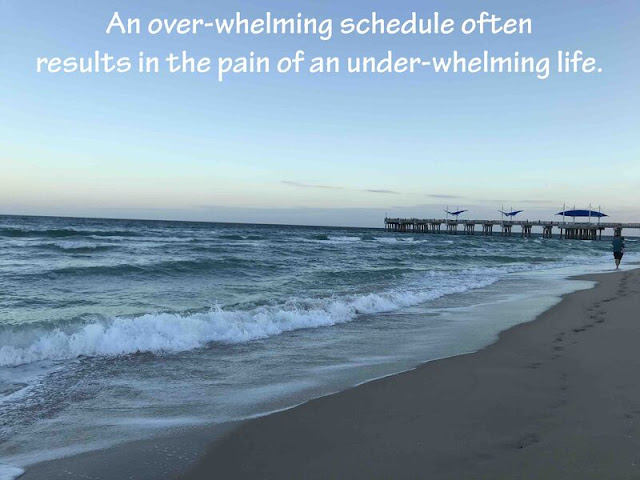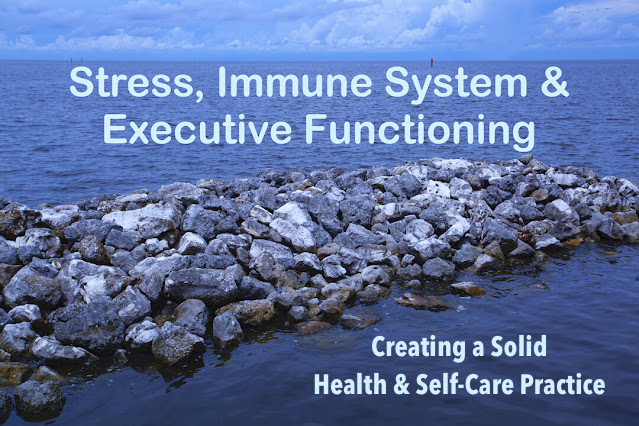Something deep in the human heart breaks
at the thought of a life of mediocrity.
-C.S. Lewis
THE BRAIN'S TOP MANAGEMENT TEAM
The skills required for achieving success are interconnected, complex and coordinated. Collectively, they are referred to as executive functioning. They are your control or supervisory center, located within the frontal and prefrontal lobes of your brain, representing a fairly large area consuming approximately 1/3 of the brain’s cortical geography.
These crucial skills incrementally evolve as you navigate through the developmental stages, reaching a full appreciation of their maturity in your mid 20s. However, the story does not end here. Neuroplasticity, the brain's ability to change and adapt as a result of experience, means you are always capable of optimizing your functioning!
We'll revisit neuroplasticity in a bit. Now, back to executive functioning: It is this structure within the brain that plays the most critical role in the success or failure of your human endeavors.
Each executive functioning skill is enhanced by the conscientious effort to embrace a non-reactive, here-and-now awareness to what is going on within yourself and your surroundings. It is somewhat ironic that executive functioning skills require executive functioning skills to strengthen. Each gain in one skill promotes gain in others.
The good news is that small and consistent improvements within any given area will result in significant gains. As one improves, it automatically (and over time) affects other skills.
If your goal is to become better organized and your starting point is low, meaning you tend to miss deadlines, be late or forget appointments altogether, have trouble finding important belongings, and live in what you believe to be a random and chaotic environment, then your best first step is to tip-toe into organization and work on one time management or decluttering skill for 30 days before attempting to add or integrate others.
Attempting to do too much too soon can create a cognitive overload that leads to task initiation failure and procrastination.
NEUROPLASTICITYThe good, the bad, and the ugly about the brain arise from its most intriguing findings and developments in recent years referred to as neuroplasticity or neuronal plasticity, which is a biological process by which your brain reorganizes its synapses, the points of contact between neurons where information is passed, in response to stimuli.
Neurons that fire together, wire together.
While clinical psychologists are attempting to map out its intricate functions, neuroscientists are focusing on its neural underpinnings. Your brain can alter its organization and ultimately its function throughout your lifetime.
Your brain makes physical changes as a cumulative result of experiences via healthy and unhealthy repeated activities, otherwise known as habits. This is one of the reasons why traveling is incredibly brain stimulating. You were not meant to live the same day, every day, in the same way, without adding healthy doses of variety and adventure.
While familiarity provides comfort, variety provides stimulation. Novel experiences, carefully woven into your life, have the potential to energize your mind, and create new pathways for growth as is observed in the proliferation in recent years in research supporting neuroplasticity.
Traveling is only one of many ways to stimulate the brain. Another excellent activity that when practiced over time provides rich benefits to the brain and nervous system is yoga. Learning to calm an over-anxious brain takes time and yoga has been shown to deliver results.
Bringing your A-game to life necessitates an internal desire to rise above mediocrity; to be quicker, healthier, smarter, stronger, sturdier, and more efficient. It requires stepping up the beat from a sluggish tempo to one that is more lively and energetic. Ultimately, the fulfillment of your potential rests on your ability to galvanize your executive functioning skills and create habits that support onward and upward growth.
James Clear, in his best-seller book, Atomic Habits, makes the case for tiny changes leading to significant results, stating "Habits are the compound interest of self-improvement." In addition to developing small, manageable action steps to support individual and specific key executive functioning skills, one practice that supports the entire gamut is mindfulness. It's paying attention to what you're paying attention to!
MINDFULNESS
Mindfulness, the act of paying attention to the present moment with a non-judgmental attitude, has become quite the buzz word in recent times. Endlessly featured on social media, magazines, television, and YouTube videos, its overuse may contribute to the dilution of its meaning and, therefore, its therapeutic benefits.
In essence, mindfulness is the basic human ability to become fully present, without feelings of overwhelm or over-reactivity. In our busy worlds, where
multitasking has become synonymous with efficiency and productivity, many find themselves buried under the pressure of a never ending To-Do list and time constraints that create a dysregulated and unbalanced life.
Add recent global events, such as
COVID, and we are seeing exponential spikes in anxiety. Living with a chronic sense of urgency and unrealistic deadlines are contributing factors leading to stress, high blood pressure, and
heart disease.
When tackling, or better yet mindfully approaching, a daunting to-do list, take a long, deep diaphragmatic breath and complete one item at a time. Move on to the next after the completion of the previous item. This will immediately evoke a feeling of calm, which will improve your executive functioning. We think better, more creatively, and more efficiently when calm. Calm truly is a super-power. Additional strategies to bring about a calmer and more mindful state of mind would be to pause and ask yourself key, self-reflection questions.
Periodically, throughout the day, pausing and conducting a mini check-in is advised. Take a moment and ask questions such as:
- Do I feel connected to the present activity?
- Is this present activity energizing me or depleting me of my energy?
- How am I feeling right now?
- When I listen to my body, what is it telling me I need?
- What am I paying attention to at this moment?
- What is the rhythm of my life right now? Too fast, too slow? Smooth, irregular?
Regularly performing acts of self-inquiry will awaken a profound sense of self-discovery. All profound personal transformation emanates from insight; from being self-curious. The right questions allow for clarity, targeted problem-solving, and resolution. Learning to get in the present moment, the HERE and NOW, strengthens the prefrontal cortex; the seat of your executive functions.
In mini doses, anxiety provides the opportunity to assess potential stressors. Through this self-assessment, you can then decide how you wish to appropriately respond in an effort to mitigate what can quickly morph into a constant state of arousal, anxiety, fear, and stress.
Paying attention to your internal state and accurately assessing when something doesn't feel right should be your initial go-to. For example, if taking work home to complete on your "day off" becomes the norm rather than the exception, then you will need to ask yourself what kind of a life will you have in one year, five years, ten years, and the cost this will create in a lack of a balanced work-life integration. However, something not feeling right does not necessarily mean it isn't right.
Irrational fear can and does rear its ugly head and similar to an unrelenting bully, it can certainly create an internal state of hypervigilance; exacerbating negative thoughts and having you believe you are powerless. An accurate assessment of a situation and perhaps even enlisting the help of trusted others can help discern a negative feeling worthy of heeding versus one that needs to be dismissed so as to move on with your life. Keep in mind this popular acronym for FEAR.
FINDING YOUR PEACE
In these distracted-driven and anxiety-inducing times, it's becoming harder and harder to experience an internal sense of peace. It wasn't that long ago that life was so much simpler.
In just my lifetime, I remember the introduction of the answering machine and call-waiting. These inventions solved several tele-communication challenges in that one can now leave a message when no one was available to answer and bypass a busy signal, respectively. Caller ID, beepers, and cellular telephones followed. This is in addition to round-the-clock television programming (and news coverage), and all the advancements that emanated from the digital revolution.
These advances in technology have certainly added value and time-saving conveniences in a plethora of ways to both our personal and professional lives. Examples that quickly come to mind include seeking information, conducting research, banking, purchasing, and communicating; just to name a few. However, what were meant to be tools to make our lives easier and more productive have simultaneously become the very elements leaving us feeling fatigued, depleted, and distracted. Rather than technology supporting our lives, it has taken over.
MINDFULNESS THROUGH MEDITATION
The enigmatic practice of meditation, rooted in deep cultural and religious history as a pathway toward enlightenment, has found itself in modern times more commonly used to manage stress and induce relaxation. Whereas meditation is a system intended to bring about a heightened state of awareness and focused attention, mindfulness describes a specific manner of living that is cultivated through this system. Meditation is a process that allows you to slow down; to go inwardly, accessing deeper insights. In contrast to a time-out, it’s more of a time-in.
In today’s world, we are constantly diverting our attention at rates never before experienced. Each and every time you take your attention away from your primary task by responding to a text message, viewing a social media post, or receiving a newsbreak notification, you are affecting the very parts of your executive processes or functions that are necessary for focusing, concentration, task execution, and task completion. It can take as much as 20 minutes to fully re-engage your attention following a distraction. Now, multiply this by the number of times per day you have a phone or device (with open tabs) nearby, and this may help explain why projects, papers, reports, and other tasks are taking longer to complete than expected, and why maybe some are not getting done at all.

While there are several paths to a mindfulness practice, the goal of any specific mindfulness technique is to connect with the present moment, in a focused state of relaxation and absent of any judgment. The mindfulness mindset requires incorporating habits such as dedicating time for self-reflection, journaling and/or meditation into systems that will eventually shape your life.
So How Do We Do This?
There are many different types of meditation, mostly falling under the categories of guided and unguided (or silent) meditations. There is not a universally accepted or “best” method, but there are components to meditation that are consistent across practices.
They include:
- focused attention
- breath awareness
- quiet and comfortable setting
- attitude of non-judgment or "observer"
How To Meditate
Starting a meditation practice does not have to be complicated. A quiet place and a comfortable seat are all you need to begin.
- Sit or lie comfortably
- Focus your attention on your breath and on how your body moves with each inhalation and exhalation
- Breathe naturally
- Notice when your mind and thoughts wander and bring your attention back to your breath
What To Do When Your Mind Wanders
It is inevitable that your mind will wander and roam. You may also notice other sensations in your body. This is typical and certainly to be expected. The mind simply and naturally wanders. When this occurs, notice your thoughts and where your mind is wandering to, and gently take a moment and pause. Without judgement, bring your mind to the present moment. Resume your meditation. With each practice, this will become easier. It is similar to muscles growing stronger through weight lifting or resistance training.
Adding a mantra, which is a repeated word or sound, will help in remaining focused and shutting out extraneous distractions. In relation to executive functioning, mindfulness meditation is a method by which attention skills are cultivated, emotional regulation is developed, and rumination and worry are significantly reduced. A mindfulness practice enhances executive functioning and is the antidote to executive functioning fatigue.
Research has documented that mindfulness techniques help improve a plethora of physical complaints such as lowering blood pressure and alleviating gastrointestinal distress. Developed at the University of Massachusetts Medical Center in the 1970s by Professor Jon Kabat-Zinn, mindfulness-based stress reduction (MBSR) is an 8-week evidence based curriculum that offers intensive mindfulness instruction to help people better manage stress, anxiety, depression, and pain. It combines meditation with hatha yoga and it teaches how to use mindfulness in daily life in order to cope with stressors.
FLOWING INTO THE ZONE
Paying attention, a key executive functioning skill, requires watching, listening, and taking notice of a person, object and/or situation. Think about the last time you were immersed in a book, project, or activity. How did you perceive time? It may have felt slower or even faster. When totally absorbed in an activity, distractions and worries disappear.
This is called entering or being in the zone, coined by psychologist, Mihaly Csikszentmihalyi, who described this feeling as a highly focused mental state.
When exiting the zone, one feels a sense of fulfillment, accomplishment, and/or calm. On the other hand, addictive behaviors, whether to a substance, food, exercise, work, or negative thought patterns produce different outcomes; typically, feelings of exhaustion, self-deprecation and fatigue.
Mindfully targeting areas of vulnerability and addictions will yield extraordinary results in the attainment of balance and equanimity. The effects of mindfulness or a mindfulness meditation practice include reducing or altogether eliminating problematic habits. These include smoking, over-eating, and procrastination. Success tends to be dose-dependent, meaning the more time you spend in mindfulness, the more powerful the effect.
Either I mindfully manage my day or my day mindlessly manages me.
MY CHOICE!
DECREASING WORRY, ANXIETY, AND INTRUSIVE THOUGHTS
Recent data cited on the Anxiety and Depression Association in America's (ADAA) website state anxiety disorders are the most common mental illness in adults in the United States, affecting approximately 18% of the population. Although highly treatable, only about 36% receive treatment.
The Diagnostic and Statistical Manual of Mental Disorders-Fifth Edition-Text Revision (DSM-5-TR) states that in order for these feelings to reach diagnostic criteria , they must be in excess of normal feelings of nervousness and anxiousness that we all, at various times in our lives, experience.
Executive functioning decreases when the mind is occupied with unmanageable thoughts of worry and anxiety, or when thoughts become sticky, ruminative, and/or obsessive. The calmer your brain and nervous system, the better your focus, decision making, and problem-solving skills.
There are a few techniques that you may find helpful when experiencing a chronic sense and/or intense feelings of anxiety. As an everyday, long-term practice, the body scan meditation is advised. However, as a more immediate relief for an immense sense of panic or overwhelm, the grounding technique is recommended.
Body Scan There are many who feel so disconnected from their bodies that they experience little to no awareness between mind and body. By learning to explore and scan your body for tension, tightness, pain, discomfort, and numbness in an engaging and accepting manner, you will facilitate the opportunity for physical relief and healing.
A body scan is a good way to identify and release tension. This is done by mentally scanning and bringing attention and awareness to every single part of your body. A body scan is performed in the following manner:
- Find a comfortable position, whether seated or lying down.
- Take a few deep, restorative breaths, allowing your breathing to gradually slow down.
- Bring your awareness to your feet. Observe sensations. Acknowledge any sensations, feelings, numbness, and/or pain and the thoughts and emotions associated with the sensations. Breathe through this awareness and observation.
- Continue this protocol with every part of your body as you move with the top of your head being the final scan.
Grounding Grounding techniques are immediately available strategies that can help in managing the intensity and frequency of overwhelming emotions and feelings of distress, such as a panic or anxiety attack. It allows you (and your brain) to step away from the negative thoughts and feelings through a distraction method using your 5 senses. This method includes firmly situating your feet on the ground, taking slow, deep breaths, stating what is observed in the present environment, and reminding yourself that you are safe.
A POWERFUL TRANSFORMATION
The practice of mindfulness has the potential to become a transformative personal experience. The relaxation element of meditation coupled with a mindfulness practice provides long lasting health benefits to the mind and body, including increasing volume in brain regions, reducing anxiety and depression, and improving immune functioning. Pay careful attention and tune in to your daily activities and how they influence your energy level.
Break new patterns of conditioning and be open to new experiences.
Additional helpful tips to calm the mind, improve thinking and related cognitive abilities, and remedy feelings of stress and burnout include connecting with nature and gratitude, on a daily basis. If you are living an over-scheduled life, then you simply are not "living." Remember
We are human BE-ings,
not human DO-ings
Serenity Now!
-Frank Costanza; Seinfeld
References
American Psychiatric Association. (2022). Diagnostic and statistical manual of mental disorders (5th ed.), Text Revision
Csikszentmihalyi, M. (2013). Creativity: Flow and the Psychology of Discovery and Invention. Harper Perennial
Clear, J. (2018), Atomic Habits. Penguin Random House
Facts & Statistics. (2021), Anxiety & Depression Association of America (ADAA) website
Kabat-Zinn, John. (2021). www.mindful.org
The information presented in this blog is intended for general knowledge
and is not a substitute for medical advice or treatment.
If you enjoyed this article and would like to read more, then let's connect:
FACEBOOK: Marie Therese Rogers
LIFE IN FOCUS
Atlantic Behavioral Health Professionals
LINKEDIN: Marie T. Rogers, Ph.D.
INSTAGRAM: Mariethereserogers
https://www.youtube.com/watch?v=_ksl3slVZmg


























Comments
Post a Comment